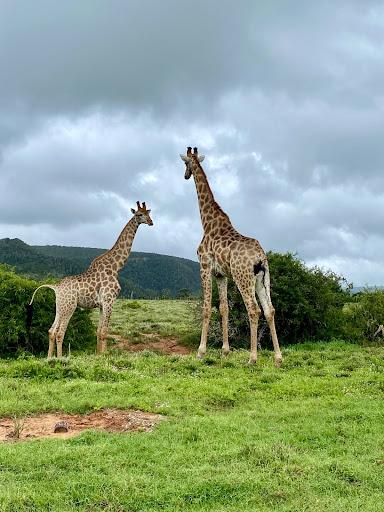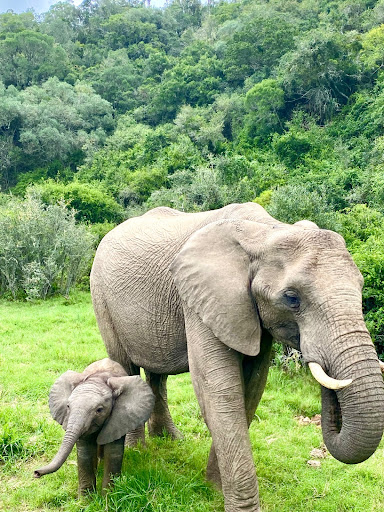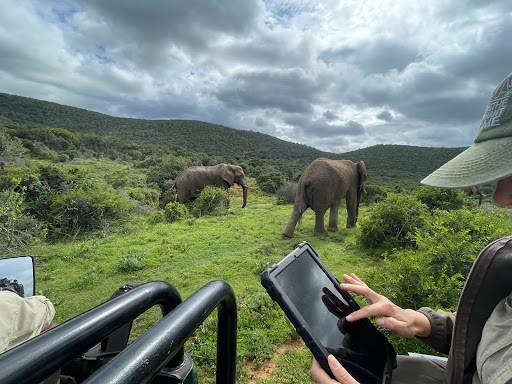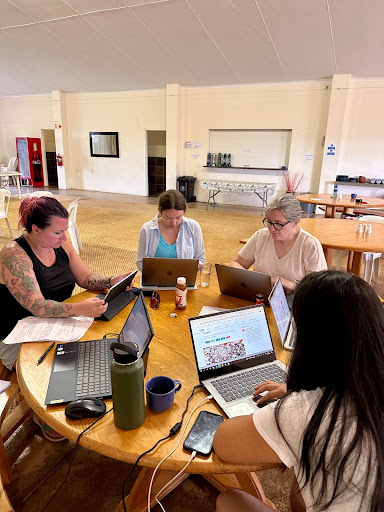It’s Saturday morning, the coffee is brewing, and you can smell the aroma from a distance, squinting at the sun with a towel over your shoulder. It will be an exciting day, and we have an important task to do: track and record elephants’ behavior, measure the size of their dung, and collect samples for further analysis in the lab. After breakfast, a friendly worker from Kariega Game reserve brings us into the field.

By Alisa Summerfield
How do we find elephants in 11,500 hectares of pristine African wilderness? In August 2022, a team of volunteers collared six elephants – three bulls and three cows. Two of them were collared on one side of the fence and four on the other.
Collars are designed in such a way that the counter-weight keeps them up on top of the elephant’s neck at all times. By using LORA technology and the Earth Ranger app, we are able to determine the location of elephants so that we always know where they are.
The app tells us that Kambaku, the biggest bull in the herd, was seen in the bush near the river 15 minutes ago. We are heading up there, making a few stops along the way to observe other wild animals.

As we reach the destination, we are lucky to witness other elephants coming down the hill one after another, heading towards a beautiful meadow to graze and play around. The whole herd gathered together – there were adult bulls and cows, young adults (15-25 years of age), subadults (5-15 years old), juveniles (1-4 years old), and calves (less than 1 year old). Aren’t they adorable?

Each one of us had a role: data collector, photographer, and observer. We picked one elephant at a time and registered its behavior in the ZooMonitor app for 14 minutes. All data need to be collected – eating, drinking, interactions with other elephants, specific positions, and body movements in combination with surroundings.
All of it will be later combined and analyzed in connection with the trigger event – fence removal.

In reality, such an event greatly affects animals’ life, and a lot of things need to be considered:
- Encountering other elephants on new territory
- Impact of elephants on vegetation
- Establishing boundaries
- Interaction with other animals, such as lions.
Several hours of observations flew by in an instant, and now elephants are slowly leaving the space and moving away. This is the moment when we start dung measuring and sampling.
A fascinating teaming activity that definitely deserves a separate post!
As we head back home after a long day, sharing smiles and feeling proud of our teamwork, we also feel blessed to have an opportunity to work with wild animals, learn new things, and most importantly – help nature.

The next Elephant Field Program has been planned for October 10-20, 2023, when Kariega’s internal fences will be removed and two herds of elephants will likely meet for the first time. For more information about this unique expedition, please visit:
